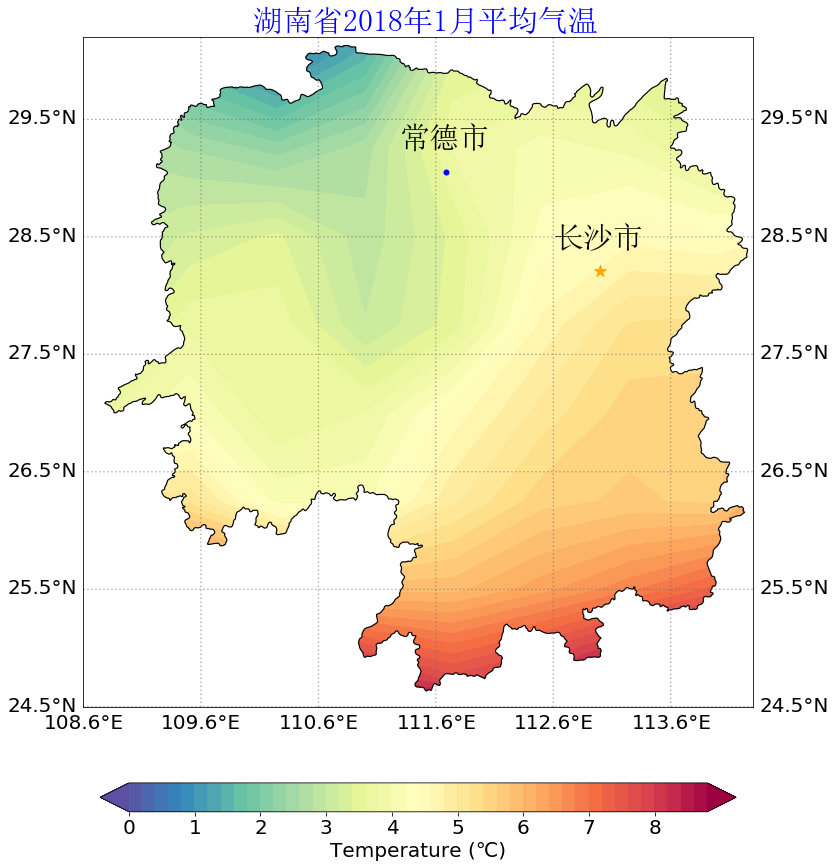
本文同步在
MeteoAI和气象学家公众号推送。前面的推文对于常用的Python绘图工具都有了一些介绍,在这里就不赘述了。本文主要就以下几个方面:“中国区域绘图”、“包含南海”、“兰伯特投影带经纬度标签”、“基于salem的mask方法”、“进阶中国区域mask方法”、“进阶省份mask方法”。对日常的实用需求能够在一定程度上满足。
简单粗暴,
Just show you my code!,细节暂不做过多分析,有问题可以探讨。数据、中文字体、地图shapefile文件、代码后文全部提供。使用建议,根据提示把缺失的库使用pip install xxx/conda install xxx/python setup.py install;安装完备,Python环境管理只推荐conda来统一管理。IDE推荐:PyCharm(有教育版)本地/服务器远程、Jupyter notebook。
- 绘制兰勃脱投影的中国区域(包含南海子图)、
- Mask掉海洋部分的兰勃脱投影(包含南海子图)
- 基于salem的白化
- 中国区域白化(包含南海子图)
- 单独省份区域白化
绘制兰勃脱投影的中国区域(包含南海子图)代码;
1 | import numpy as np |
出图:
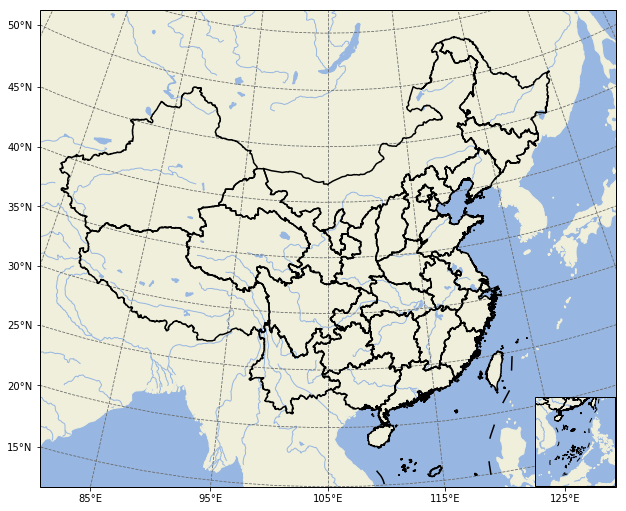
Mask掉海洋部分的兰勃脱投影(包含南海子图)
1 | # https://gnss.help/2018/04/24/cartopy-gallery/index.html |
出图:
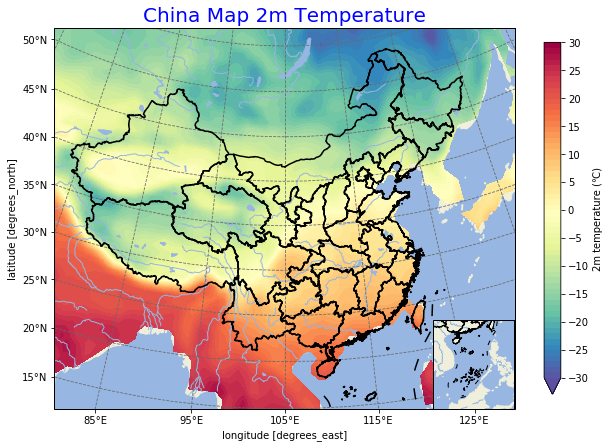
基于salem的白化
1 | import salem |
出图:
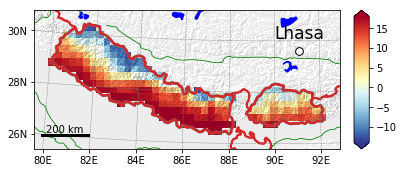
中国区域白化(包含南海子图)
1 | #https://regionmask.readthedocs.io/en/stable/defined_landmask.html |
出图:
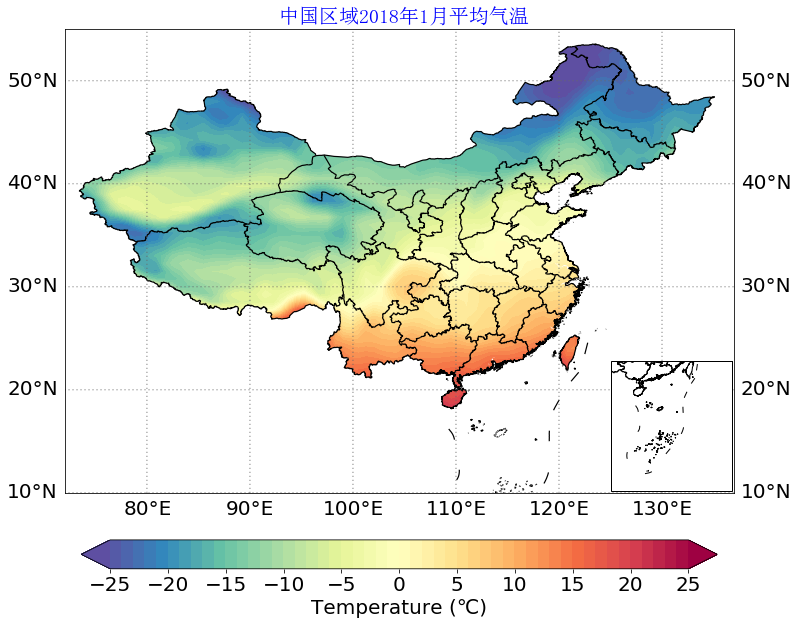
单独省份区域白化
1 | #https://basemaptutorial.readthedocs.io/en/latest/clip.html |
出图:

测试数据和代码:链接:https://pan.baidu.com/s/18R6RWYhi5p_wMbMrdKzw2g 密码:jwil
参考:
链接.1
链接.2
链接.3
链接.4
链接.5
链接.6
链接.7
链接.8
有任何问题都欢迎交流探讨,共同学习进步!


